|
Dr. John
A. Cuculo
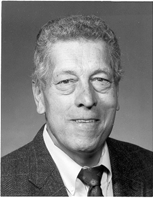
|
| Ultra-oriented
crystalline filaments |
| U.S.
Patent Number RE35,972 |
 |
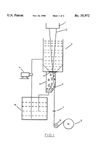 |
|
|
| Anisotropic
cellulose articles, fibers, and films and method of producing
same |
| U.S.
Patent Number 4,840,673 |
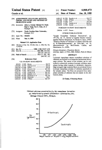 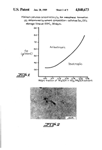 |
|
|
|
|
Dr. John A. Cuculo
worked at duPont for 18 years and at NC State University for 30
years. He has worked with most of the thermoplastic fiber forming
polymers. He developed a process call Liquid Isothermal Bath (LIB)
which operates via a threadline control process for the production
of high-performance high-speed spun fibers. He has also studied
the dissolution of cellulose, the formation of high-performance
cellulose fibers via the solution of spinning of anisotropic solutions
in the NH3/NH4SCN solvent system and the structure/property relationships
of cellulose.
|
|
The above images
can be clicked on to view additional information on Cuculo's patents.
|
|
|
|
|
Dr.
Hechmi Hamouda researches thermal and fluid sciences applications
to textiles, specifically infra-red and radio frequency heat treatments,
thermal evaluation and testing of fire protective fabrics, textile
pollution prevention, textile waste elimination/reduction, effects
of textile products on indoor air quality, numerical simulation
and modeling, finite differences resolution techniques, finite element
analysis, fluidized beds and stability analysis of convective flow.
Other areas of research include mechanics and formation of fibrous
structures, principles of polymer engineering, instrumentation and
control systems, monitoring and control of knitting equipment, and
Textile applications in biomedical engineering. |
|
|
|
U.S.
Patent Number 5,749,259
Apparatus
for simulating the thermoregulatory responses of human skin and
related method for predicting fabric comfort level
|
|
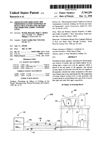 |
Click
on the image to read more about this patent. |
|
|
| Dr.
Trevor J. Little |
|
Dr. Trevor
J. Little researches apparel manufacturing and management,
production and assembly systems, design for manufacturability,
automated manufacturing systems, handling systems, manufacturing
simulation, human factors, technology development, and information
technology.
|
| Sewing
machine having sewing forces measurement system |
| U.S. Patent
Number 4,869,187 |
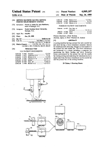 |
The
image to the left describes Little's sewing machine patent.
|
|
|
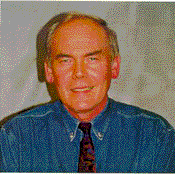 |
| |
|
Professor
Emeritus Mansour Mohamed patented three-dimensional weaving
systems 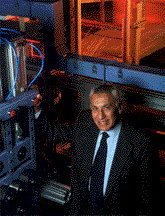 that
produce lightweight, superstrong, high-performance textile
composites that are used in cars, planes, and in the aerospace
industry. His research led him to start a company called
3TEX, which produces and markets the products. Mohamed developed
the technology nearly a decade ago for NASA's Mars Mission
Research Center at NC State. Carbon, Kevlar, fiberglass
or ceramic fibers are woven on the weft, warp, and Z (thickness)
direction, and then impregnated with polymer resin, ceramic,
or metal and hardened to produce stable, preformed structures
that can be steel. Mohamed continues to explore an array
of applications for the process, and his latest patent for
five-dimensional weaving technology adds strength to its
end products. Recently, he collaborated with his NC State
colleagues in architecture and civil engineering to use
textile composites to reinforce concrete for building and
infrastructure material. that
produce lightweight, superstrong, high-performance textile
composites that are used in cars, planes, and in the aerospace
industry. His research led him to start a company called
3TEX, which produces and markets the products. Mohamed developed
the technology nearly a decade ago for NASA's Mars Mission
Research Center at NC State. Carbon, Kevlar, fiberglass
or ceramic fibers are woven on the weft, warp, and Z (thickness)
direction, and then impregnated with polymer resin, ceramic,
or metal and hardened to produce stable, preformed structures
that can be steel. Mohamed continues to explore an array
of applications for the process, and his latest patent for
five-dimensional weaving technology adds strength to its
end products. Recently, he collaborated with his NC State
colleagues in architecture and civil engineering to use
textile composites to reinforce concrete for building and
infrastructure material.
|
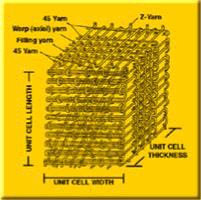
3-D
woven fibers remain straight in each axis, reducing
the fiber stress damage that can occur with other
weaving methods.
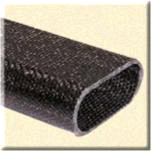
3-TEX
carbon preform composites are stronger than steel
and lighter than aluminum.
|
| The
office of the director of NC State's Office of
Technology Transfer and Industry Research (OTTIR)
has played a major supporting role in launching
3TEX. Mark Crowell, director of OTTIR, says, "the
start-up venture underscores NC State's commitment
to help move important discoveries from the laboratory
to the marketplace." NC State is commited to securing
patents to protect intellectual properties and
to evaluate the commercial potential of the technology.
Robert Pozner, associate director of OTTIR, notes
that feedback has been positive. In fact, a German
automotive company that purchased one of Mohamed's
early three-dimensional weaving machines for research
purposes has demonstrated that composites
out-perform aluminum in strength and rigidity.
The company's findings support Mohamed and his
colleagues' research that anything that can be
made with metal can be made with fiber-reinforced
composites--from engine parts to oil rigs to heat
shields. |
|
|
|
| Dr.
Donald Shiffler |
| Improvements
in process for preparing water-dispersible polyester fiber
|
| U.S.
Patent Number 5,145,622 |
|
| Many
millions of pounds of polyster are produced worldwide using
the technology in this patent. Commercial plants are currently
located in North and South Carolina, People's Republic of
China, India, Turkey, Russia, and other site's throughout
the world. The advantages are extremely low investment, internal
waste recycling leads to high yields and low environmental
impact, and low heavy-metal catalyst usage. |
|
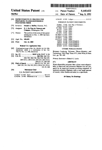 |
Click
on the image to the left to read more about Shiffler's patent.
|
|
| |
|

